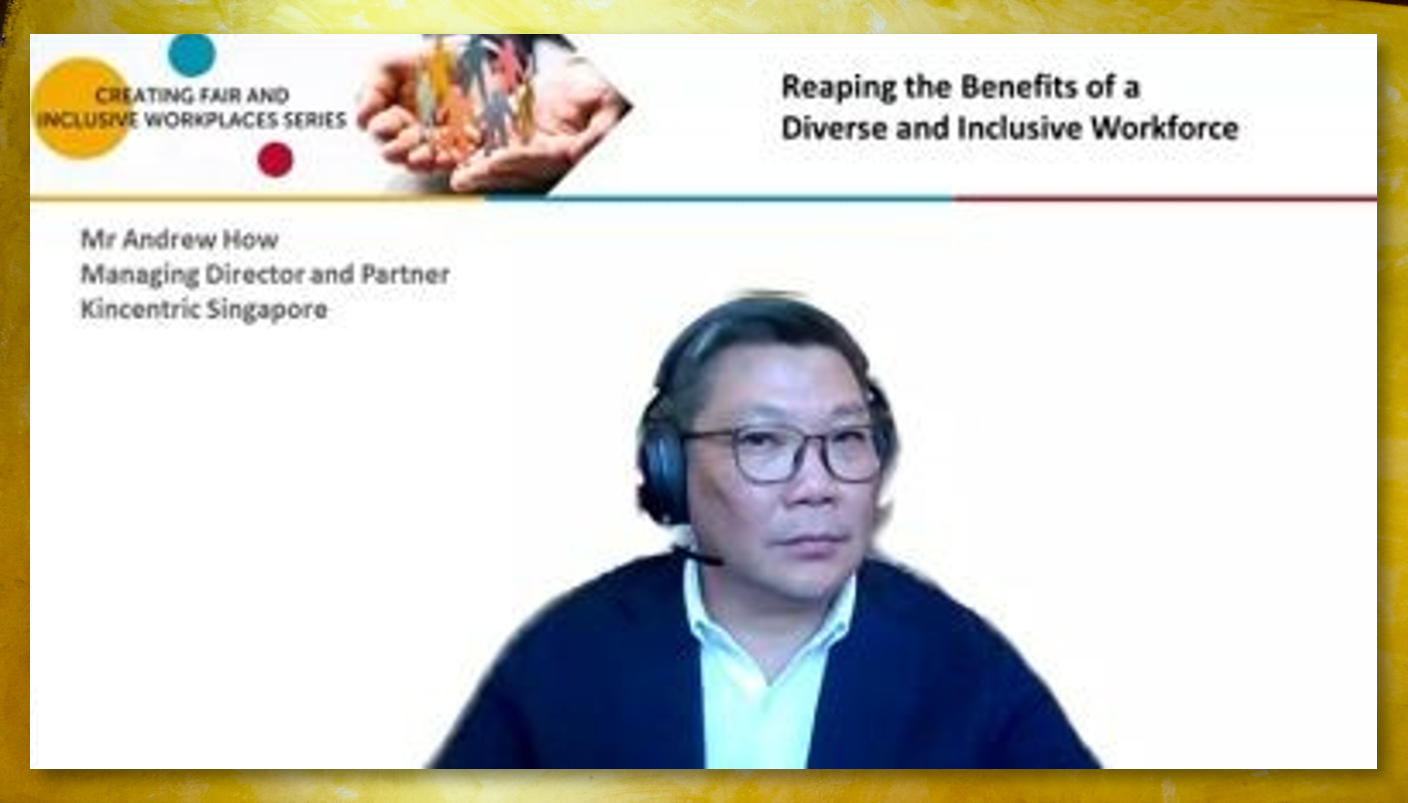Reaping the Benefits of a Diverse and Inclusive Workforce (Part 1)
Discover D&I strategies to engage and empower employees.
16 Oct 2023 Articles Work-life harmony Trending Best practices

Mr Andrew How, Managing Director and Partner from Kincentric Singapore
Both organisations and employees stand to lose when workplace exclusion happens – with decreased productivity, lowered staff morale, and increased stress among several possible consequences. It is therefore crucial for organisations to address and root out exclusion by fostering an inclusive work culture, which can lead to powerful business outcomes for elevating employee engagement and staff performance.
In this article, we bring you insights from Mr Andrew How, Managing Director and Partner from Kincentric Singapore on harnessing the impact of diversity and inclusion (D&I) to engage and empower employees.
Establish Clarity on Purpose and Impact of Diversity and Inclusion
Firstly, organisations should be clear about their business case for diversity and inclusion:
- Why does D&I matter to the organisation?
- What is the intended impact for implementing D&I initiatives?
Without clarity on these areas, organisations are more likely to face the pitfall of having D&I initiatives or events done just for the sake of visibility or not being meaningfully aligned with the organisation’s direction – making it difficult to achieve employee buy-in and engagement.
As an example of a clear D&I business case in practice, Mr How shared about an engineering firm that recognised the value of diversity in helping the organisation understand and meet the needs of clients. Hence, a focus was set to increase female representation in their workforce, given that its industry is male dominated.
With this clear direction, the organisation implemented woman-focused mentorship programmes and built a nursing room to encourage new mothers to return to work, among other D&I initiatives. To evaluate the effectiveness of these efforts, the organisation tracks its progress annually and the results are shared with all employees; for instance, female representation among executives rose from 19% in 2021 to 22% in 2022.
The Value of Consistent Experiences of Inclusion
Based on Kincentric’s Global Inclusion Study conducted in 2023, employees with good experiences of inclusion in the workplace reported positive results for the following sentiments:
- Ability to thrive and grow professionally
- Able to make a meaningful difference
- Have a sense of accomplishment at work
On the flip side, employees with inconsistent experiences of inclusion reported similar low results for the above sentiments when compared to employees with negative experiences. This means if employees have inconsistent experiences across the different levels in the organisation (e.g., interactions with supervisors or coworkers), their level of engagement in the organisation would be significantly impacted.
To provide consistent experiences of inclusion for employees, organisations can work on these two inter-related areas:
1. Inclusive leadership
Leaders are pivotal for setting the tone and shaping workplace culture. They should clearly convey what diversity and inclusion means to the organisation (e.g., listing unacceptable workplace behaviours) and walk-the-talk by taking active steps to drive inclusive efforts that is felt by everyone in the workplace.
2. Culture of inclusion
Culture refers to the unwritten rules, norms and behaviours at the workplace. An inclusive culture can be defined as an environment where employees are truly valued for their contributions, feel safe to speak their minds, and are empowered to contribute their best.
To assess the level of inclusivity in the workplace, organisations should hear from employees at all levels through deliberate engagements (e.g., team meetings, one-on-one conversations, engagement surveys). From the data and insights gathered, organisations can adapt and refine their approaches in addressing D&I matters in the workplace.
All in all, D&I is not a destination, but always an ongoing journey - the more intentional an organisation is about creating a diverse workforce and a culture of inclusion, the more likely the organisation will reap its benefits.
This article is the first instalment of a series touching on the key learning points from TAFEP’s webinar “Reaping the Benefits of a Diverse and Inclusive Workforce”. You may view the second part of this series here.
